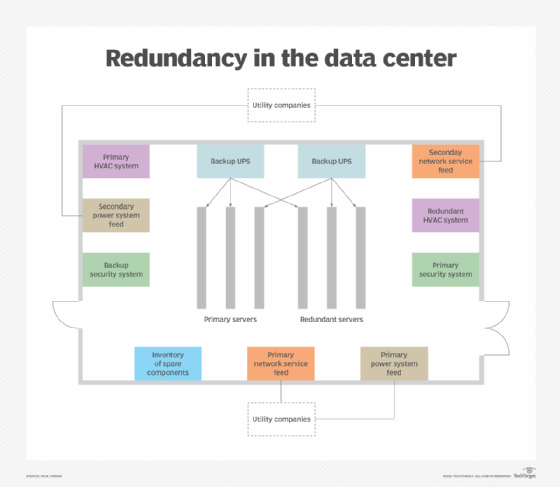Exploring the Interplay Between Firm Redundancy and Organizational Flexibility for Future Development
In the vibrant landscape of today's business world, the detailed relationship between firm redundancy and business versatility arises as an essential element for continual growth and success. Business usually deal with the obstacle of striking a delicate equilibrium in between maintaining a degree of redundancy to alleviate threats and promoting adaptability to react quickly to the ever-evolving market demands. This delicate interaction holds the crucial to not only surviving in rough times but likewise growing despite uncertainty. As we explore the complex measurements of this interplay, intriguing understandings into how organizations browse these intricacies to lead the way for future growth wait for.
Relevance of Firm Redundancy
Firm redundancy is a critical component that improves business durability and mitigates functional risks. By incorporating redundancy actions within the organizational framework, firms can much better withstand unpredicted interruptions and fluctuations in business setting. Redundancy functions as a calculated buffer, allowing companies to adjust and respond effectively to unanticipated obstacles without endangering vital procedures.
One trick element of the significance of firm redundancy is its role in ensuring connection during times of crisis. When faced with sudden changes or emergencies, repetitive systems, resources, or workers can tip in to keep crucial features and avoid widespread interruptions. This continuity not only safeguards the company's online reputation and client depend on yet also decreases financial losses and functional downtime.

Approaches for Business Flexibility

Developing versatile organizational structures that allow for fast changes to market characteristics and consumer requirements is necessary for staying competitive in a swiftly advancing atmosphere. By proactively determining potential disturbances and opportunities, organizations can proactively adjust and prosper in an ever-changing organization landscape.
Balancing Redundancy and Adaptability
Attaining a harmonious equilibrium in between functional redundancy and organizational adaptability is extremely important in navigating the intricacies of a vibrant business setting. Redundancy within a business provides a safety and security internet, guaranteeing connection and security in operations. Nevertheless, an excess of redundancy can bring about ineffectiveness and hinder flexibility to altering market problems. On the other hand, organizational flexibility allows firms to respond without delay to external interruptions and seize brand-new possibilities. Striking the ideal balance between redundancy and flexibility is a delicate procedure that calls for a deep understanding of the organization's objectives, industry dynamics, and threat tolerance.
To achieve this equilibrium, firms require to perform normal analyses of their procedures to identify areas where redundancy is necessary for risk mitigation and where versatility can drive innovation and growth. Implementing flexible structures, fostering a society of continual understanding and renovation, and urging open interaction throughout all levels of the organization are key techniques to balance redundancy and versatility efficiently. By aligning these 2 critical components, firms can place themselves for sustainable growth and success in an ever-changing business landscape.
Case Researches on Adjustment Success
In examining circumstances of effective organizational adjustment, it ends up being apparent that the interplay in between operational redundancy and adaptability is a specifying variable in shaping resistant organizations. One compelling study is that of Netflix. At first a DVD rental service, Netflix showed impressive versatility by transitioning into a streaming system when digitalization interrupted the industry. By purposefully purchasing technology and web content development, Netflix not only made it through however thrived in a rapidly progressing market. Another standout example is Amazon. Beginning as an online book shop, Amazon continuously adjusted its organization design, increasing into varied industries such as cloud computer and man-made knowledge. This flexibility permitted Amazon to stay ahead of rivals and fulfill changing customer needs. Lastly, Adobe supplies a notable illustration of successful adjustment. The firm shifted from selling software program licenses to a subscription-based model, guaranteeing reoccuring revenue streams and improved consumer engagement. These study underscore the significance of visit our website functional redundancy coupled with business adaptability in promoting long-lasting development and competitiveness.
Structure Durability for Future Growth
Building durability for future growth requires a tactical positioning of operational processes with market characteristics and arising fads. Business need to adapt to changing environments by fostering a society of adaptability, technology, and continual enhancement. Durability includes not only bouncing back from setbacks but additionally proactively planning for future difficulties. One crucial aspect of building resilience is buying durable danger management approaches to minimize prospective disruptions. This consists of scenario planning, expanding supply chains, and establishing contingency strategies for different contingencies (who pays redundancy money).
Additionally, fostering solid relationships with stakeholders, such as consumers, workers, distributors, and the neighborhood, is crucial for maintaining and weathering unpredictabilities trust and support see this page throughout rough times. Reliable communication and transparency play an essential function in structure resilience, as they assist promote and align expectations cooperation in navigating uncertainties.
Moreover, organizations require to focus on knowing and growth efforts to upskill employees and outfit them with the needed devices to adjust to changing situations. By spending in their labor force, companies can enhance their versatility and dexterity, eventually reinforcing their strength for lasting future growth.
Conclusion

In the dynamic landscape of today's service globe, his comment is here the elaborate partnership between firm redundancy and organizational versatility arises as a vital factor for sustained development and success. Firms typically face the challenge of striking a fragile equilibrium between maintaining a level of redundancy to minimize dangers and promoting flexibility to react swiftly to the ever-evolving market demands.To accomplish this equilibrium, companies need to carry out normal assessments of their operations to determine locations where redundancy is essential for threat mitigation and where adaptability can drive advancement and development.In final thought, the interplay between firm redundancy and business flexibility is essential for future growth. Building durability with a mix of redundancy and flexibility will certainly make certain that firms are prepared for the difficulties of the future.
Comments on “Redundancy Pay If Company Goes Bust: Recognizing Your Privileges in the UK”